#castile imagine
Text


#fox writes imagines#spn#supernatural#Castile#cas#death tw#dead!reader#spn imagine#supernatural imagine#castiel imagine#cas imagine
22 notes
·
View notes
Text
i need a bait queerbait, like queerbait but at the end it’s not queerbait but everyone thinks it’s queerbait. slow burn basically but it feels homophobic until it’s not
#supernatural but after castile confessed and died dean rescues him next season and then we have 5 seasons of them being domestic#castiel#oops#like imagine#shipping#queerbait#queerbaiting#idk#lol#fandom#??#i
3 notes
·
View notes
Text
I dreamed this, does that mean it didn’t happen? Does it have to happen in the world to be real?
Louise Glück, Castile
5 notes
·
View notes
Text
Henry III 100% gets bullied by Blanche of Castille simply because she's older and actually has her shit together.
Not to mention he kept their cousin imprisoned.
#imagine if you will#blanche of castille just tugging henry iii down by the ear#and just asking him wtf he's doing
1 note
·
View note
Text
If you liked that, you might like this: Good Omens and World Of The Five Gods
Heyo! Time for another ramble~!
Good Omens has given me a bit of a taste for theologically interesting fantasy, which led me to the World of the Five Gods series by Lois McMaster Bujold -- let me tell you about it! (Not everything, but hopefully enough to whet your appetite and spark your curiosity ^_^)
Putting everything under a cut, because while this isn't really a meta and I'm going to try to avoid spoilers as far as possible, I am going to be infodumping so it's gonna get loooooooooong XD #AutismForTheWin
So! World of the Five Gods is set in a sort of fantasy-counterpart-culture version of Medieval Europe (more or less late Reconquista era), but with the map rotated 180 degrees. Consistent across countries and cultures is the Quintarian religion, which involves worship of a pantheon of five gods:
The Father of Winter, who deals with mature manhood, fatherhood, justice, fairness, leadership, natural deaths, male virility and suchlike. His colours are grey and black.
The Mother of Summer, who covers mature womanhood, motherhood, love and its results, female sexuality, birth, renewal and healing/medicine, among others. Her colour is green.
The Daughter of Spring, whose purview is youth, beauty, virginity, education and planting. Her colour is blue, which is frequently trimmed with white.
The Son of Autumn, who covers war, hunting, courage, harvest and emotion. His colours are red and orange.
The Bastard, the broadly benevolent but frequently inscrutable trickster figure of the pantheon. His purview is orphans, demons, disasters and chaos, illegitimate children, queer folks, executioners, divine justice where mortal justice fails, lives unnaturally cut short, "all things out of season". His colour is white. He likes it when his followers 'pray' to him by cursing him out, both because they're actually *thinking* about their situations and because he finds it hilarious. (His sense of humour is a bit odd...) At the uttermost end of mortal justice, when all else has failed, one can pray to the Bastard for a 'death miracle', which if successful will kill both you and the intended target via one of the Bastard's demons taking your soul and theirs.
The Quadrene religion views the Bastard as a demon rather than a god, and reviles as heretical those matters which fall within his purview.
The gods have total power over the world of spirit, but their ability to affect the world of matter is highly limited at best; they thus have to rely on mortal agents. The tool is not the work, though -- tools get broken, after all -- so being a tool of the gods tends to really fucking suck.
WotFG has (at time of writing) three novels and twelve novellas.
The novels are:
The Curse of Chalion -- The Daughter's book. An escapee from a slave galley seeks a position in the household of his old patroness, is assigned as secretary-tutor to the Royesse (= princess) of Chalion (roughly equivalent to Castile in Reconquista-era Spain) and does his darndest to protect her from the deadly court machinations of the PROFOUNDLY evil chancellor and his brother while also seeking a way to break the curse of the title. (Seriously, get you someone who's as fiercely loyal and devoted to you as Cazaril is to 'his ladies'!)
Paladin of Souls -- The Bastard's book, and direct sequel to Curse, taking place a few years later. Ista, Dowager Royina of Chalion, is fed up of being locked in her rural castle by well-meaning caretakers who mistake her god-touched status for insanity. She goes on what is ostensibly a pilgrimage for her mother's soul, and finds that the gods are not done with her yet... (not quite the little-old-lady fantasy hero I've seen tumblr posts about -- Ista's in her forties -- but she is *very* badass and outspoken; one can imagine her being played by Catherine Tate)
The Hallowed Hunt -- The Son's book, set about 250 years before Curse, in the Weald (roughly analogous to Germanic areas). Ingrey kin Wolfcliff is dispatched to a remote castle to collect a young woman called Ijada, as well as the corpse of the highborn would-be rapist whose head she bashed in with a giant war hammer. Devious machinations and long-laid schemes abound surrounding the Hallow Kingship of the Weald, into which Ingrey and Ijada are swiftly drawn.
The twelve (so far) novellas focus on Learned Penric kin Jurald, scholar and sorcerer-divine of the Bastard's order, and his demon Desdemona. They take place roughly 150 years after Hunt (so, about a century before the start of Curse) and start out set in the Cantons (equivalent to Switzerland), but Penric (and the stories) travel around a fair bit. There is some interesting gender-wibbliness involved as well, because all of Desdemona's hosts prior to Penric were female, still live on in some way within her such that Penric can channel and converse with them, and Penric has to cross-dress more than once (particularly and memorably channelling the courtesan Mira).
In terms of approximate internal chronology, the Penric novellas are:
Penric's Demon, Penric and the Shaman, Penric's Fox (collected in the omnibus titled 'Penric's Progress')
Penric's Mission, Mira's Last Dance, The Prisoner of Limnos (collected in the omnibus titled 'Penric's Travels')
Masquerade In Lodi [chronologically earlier than the stories in Penric's Travels], The Orphans of Raspay, The Physicians of Vilnoc (collected in the omnibus titled 'Penric's Labors')
The Assassins of Thasalon, Knot of Shadows, Demon Daughter (at time of writing, to the best of my knowledge, only available in e-book format)
The novels and novellas can technically be read in any order (though, being a sequel to Curse, Paladin of Souls contains spoilers for that book). Personally, I find the worldbuilding easiest to digest when reading the novels in publication order (Curse, Paladin, Hunt), then the Penric stories. It's up to you, though!
The setting of WotFG as a whole (as I mentioned at the start) is informed to varying degrees by the history of Spain's 'Reconquista' era; the influence is especially strong in The Curse of Chalion, to the point that I'd strongly advise against making a drinking game out of it -- there are parallels to persons and events you wouldn't think could *have* parallels! Good fodder for a history-side-of-tumblr meta post, though, eh? ;-) (pls tag me if you do make one, I'd love to read it!)
Having come to WotFG from Good Omens, I have a particular soft spot for the Penric stories -- there are a few parallels with GO (a small enough number that it's probably safe to make a drinking game out of it -- though I'd still recommend tumblr meta-posts as the safer and healthier alternative!), all of which are more than likely genuine coincidences, but enough to add an ineffably lovely layer of enjoyment :D Have fun finding 'em ^^ (Srsly, the AU fanfics almost write themselves...)
Happy reading!
(tagging @ao3cassandraic and @vidavalor -- I get the feeling you'll like WotFG if you haven't run across the series already)
#good omens#world of the five gods#the curse of chalion#paladin of souls#the hallowed hunt#penric and desdemona#lois mcmaster bujold#book recommendations#book recs
37 notes
·
View notes
Note
Considering how particular Carmy is about clothes and his newly revealed artistic skills, do you think he knows how to sew too?
yes! carmy strikes me as a guy who unintentionally practices sustainability and that includes knowing how to sew.
i'll reluctantly accept that carmy's a little fashion king and purchases $95 white tees but eats ramen for dinner. i imagine he has a small selection of high-quality items in his wardrobe and that would encourage him to a) take care of them and b) learn the skills to do so.
i feel like having skills like sewing would tie back into all of his little neuroses over control and wanting to be needed, too. i cannot fix x, y, and z but i can patch the hole in this shirt.
but yeah, a thousand times yes. he knows how to sew and has a gallon of castile soap under the sink for sure.
69 notes
·
View notes
Text
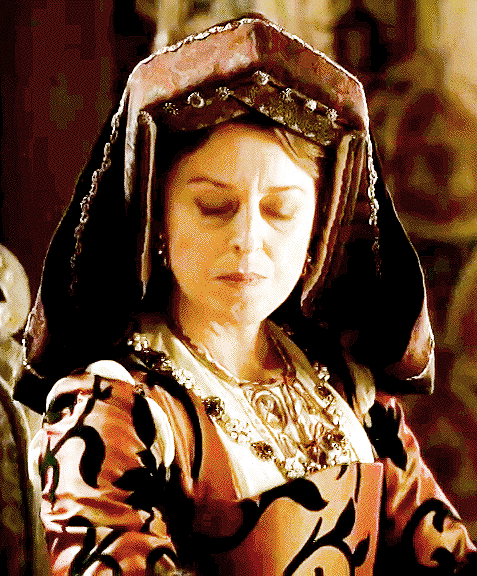
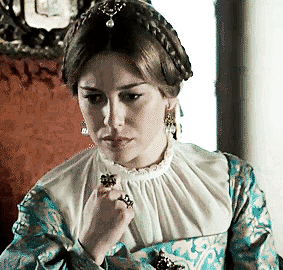

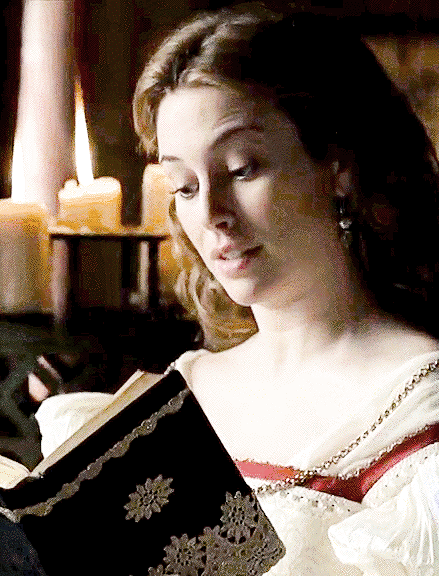
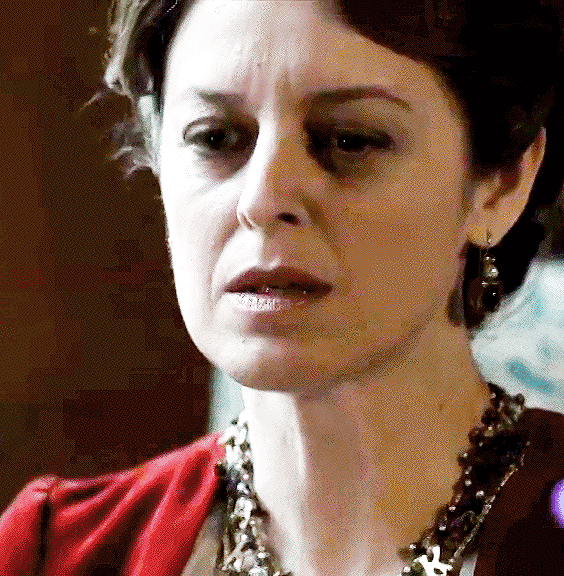

Katherine of Aragon & Isabel of Portugal
Holy Roman Empress Isabel of Portugal was interested in the case of the repudiation of her aunt the Queen of England, and she was an advocate of her cause. Katherine of Aragon knew that her nephew, Carlos V, was her only chance to defend her case successfully and that is why she wrote him. Since the death of King Fernando II of Aragon in 1516, her nephew had been her paterfamilias, the head of the Spanish Monarchy, and the most powerful monarch in Europe. Katherine played an active role as ambassadress in the Tudor court, and she was one of his biggest European supporters. Seven months after Katherine’s plead, Carlos sent a letter to his wife Isabel in Spain who was acting as his Governor during his absence. He entrusted her with a mission, to find evidence and witnesses that could help their aunt in her cause to defend her marriage.

The Empress rejoiced that her husband Carlos V was so determined to defend the right of Queen Katherine, which, indeed, it were his duty to do; not only because she was his aunt but also because the case closely concerns the Christian religion itself. Isabel sent several orders to different parts of the Iberian Peninsula to gather evidence. The first was directed to the officers in the Chancillería in Aragon to look for any legal documents related to the
marriage negotiations. Another order was sent to elaborate a list of people who were still alive and who had been witnesses in the negotiations concerning Katherine’s marriages. A second group of people were those who had accompanied Katherine to England in 1501. The third order included a questionnaire for these people that directly addressed Katherine’s virginity.
Katherine herself had written to her a full account of the case, of which copies were made to be sent to the Universities of Castile, Aragon, Valencia and Catalonia, with the orders of the Empress that the Universities are to study the case very carefully and send their opinions to her. Originals of the same shall be sent to the Emperor, and copies to Micer Mai in Rome.
In May 1531 a letter was rediscovered in Spain, written by Katherine’s father Fernando to his ambassador in Rome, Francisco de Rojas, which appeared to change everything. Katherine must have been excited to hear that it confirmed that Arthur had not consummated the marriage but that Rojas was to apply for a dispensation anyway in order to satisfy the English.
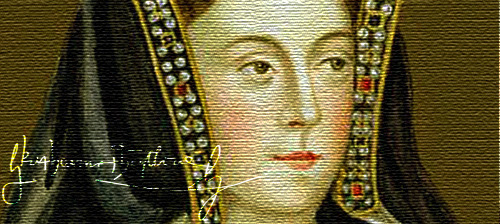
Empress Isabel was in contact with her ambassadors in Rome, France and London. Dr Pedro Ortiz, an expert in law and Lecturer at the University of Salamanca designated to defend Katherine’s case in the papal court, wrote to the Empress urging her to collect Katherine's letters as the future relics of a holy martyr. In another letter, Ortiz implored the Empress to pray for Katherine and Mary. He believed that they are in great danger.
The death of Katherine of Aragon on 7 January 1536 at Kimbolton Castle, was really sad for the Spanish Royal family. Carlos V was in Naples. By February 1, the Emperor wrote to his wife, who was acting as his regent in Spain, saying that he had heard of Katherine’s death “five or six days” previously. He told her that he and his court had donned mourning and that suitable obsequies had been performed.
Five or six days ago the news of the demise of her most Serene Highness the queen of England arrived, which I felt deeply, as you may imagine. May God receive her in Paradise, which she certainty deserved on account of her extreme goodness and virtue, and the excellent life she led. About her last illness and death the accounts differ. Some say that it was produced by a painful affection of the stomach, which lasted upwards of 10 or 12 days; others that the distemper broke out all of a sudden after taking some draft, and there is a suspicion that there was in it that which in similar cases is administered. I do not choose to make such an affirmation, nor do I wish to have it repeated as coming from me, but nothing can prevent people from judging and commenting upon the event according to their own feelings. Of the Princess, my cousin, I hear only that she is inconsolable at the loss she has sustained, especially when she thinks of her father’s past behaviour towards herself, and of the little favor she can expect for the future. I trust, however, that God will have pity on her, and will not permit the great injustice which has been shewn her to remain with- out some reparation. I have put on mourning, and ordered all the grandees around me, the high officers of this household, as well as the gentlemen of my chamber and table, to do the same, and I myself intend wearing it until I go to Rome. The exequies have been performed here as is customary in such cases; there, where you are, the same ought to be done, as this is but fitting.
Isabel felt Katherine’s death and she was surprised “by what is said of her death”, the rumors about a possible poisoning of her aunt. The Empress also received a letter from Dr Ortiz, enclosing a copy of one from ‘that glorious martyr’ Katherine herself ‘by which the Empress will see the perfection and heroic virtues to which she attained’. Katherine would be a ‘true patroness and advocate of the Empress in Heaven’.
Sources:
Amy Licence, Catherine of Aragon: An Intimate Life of Henry VIII's True Wife
Emma Luisa Cahill Marrón, Article: “Royal Sexualized Bodies at the Tudor Court”
: Questioning an Honest Queen: The Scrutiny Around Queen Catherine of Aragon's Virginity
Julia Fox, Sister Queens: The Noble and Tragic Lives of Katherine of Aragon and Juana, Queen of Castile
#catherine of aragon#katherine of aragon#catalina de aragon#isabella of portugal#isabel de portugal#english history#spanish history#women in history
18 notes
·
View notes
Note
give us some Francex Spain headcanons please
This is so long and unorganised, apologies. TL;DR - Francis is lucky Antonio is so placid, because the moments he bites back genuinely frighten him, but the status quo of him sitting neatly on top of Spain always seems to swing back around. Again, Francis is lucky Toni's life ambition is to own a cafe...
For proper context - I imagine Antonio as Castille first, then comes to represent Spain as a whole, though I imagine there will be representations of Galicia, Catalonia/Aragon etc. just like there's the regions of Japan or Picardy for France or indeed how Arthur represents the UK internationally, but of course his brothers are still very much around. So, just for why I think Francis and Antonio have a relationship which goes way back.
Francis and Antonio I imagine as a sin/cos curve... like when Francis is up high, above Toni, things are 'correct' and in their natural place. They're friendly as Antonio is such a mild mannered friendly kid he's quite content to sit and listen to Francis crow about his amazing Kings and fancy court and so on. Francis loves to brag about how it's him that's the true heir to Rome, not the Germans. Spain nods, thinking about other more important things back home.
France used Spain very much as a bulwark against the al-Andalus parts of the Iberian Peninsula - as Francis at the time of Charlemagne and thereafter loved to see himself as the saviour of Europe, so as time goes by and we zip by the occasional Castille/France team up versus England/Portugal you start to get an increasingly influential Spain by the late 15th century, and the trouble is... Toni wants the same thing as Francis. And oddly enough, he's better at getting what he wants, despite seemingly not really trying. Maybe because he is honest to goodness just a little bit less... smug? But sometimes reading Spanish history in the 1500s is going like: Oh. Well that was convenient. It's not the reality of course, but it must have been very frustrating.
Antonio also dislikes the same things as Francis. So it's interesting. When they're fighting my God do they go at it. When they're on the same side their a pretty solid duo. But I love the idea of Antonio just pissing Francis off at times, and like... sometimes just by vibing. The man's vibes are zzzzzzzzzzzzzzzzzzzzz. And Francis - depending on his ego that day - finds it rancid. I know a lot of people don't like the way Antonio is characterised, but I love him as he is so shh. He's so disconnected at times from the reality going on around him. Only his immediate circle matters. He doesn't seem to really understand his Civil War. I think compared to Francis, who is much more in tune with his people... it gets messy.
The trouble comes because Francis is jealous, and likes his standing as number one in Europe. No-one can challenge that. But Antonio does, for a good century or even two, and maybe Antonio doesn't necessarily mean to, but his King and Queens do, or maybe Antonio finds that ambition suits him. The 15th through to mid 17th century gives him the ability to out class Francis. Maybe it's not intentional at first, but once Antonio finally grasps what he may be about to lose during the Thirty Years War and then the failing of his line of the Habsburgs... the ugliness comes out full force.
But... Like to show the overlap once Spain starts to really assert themselves in the late 15th Century, and how truly infuriated Francis must have been at points. They both have a vested interest in Italy - Antonio wins that one. Francis has a stake in Barcelona - Antonio wins that one. They both want the Low Countries. Antonio wins that one. Antonio gets Holy Roman Empire. And the actual creme de la creme... Antonio has divided the world in two with that blooming Treaty of Tordesillas. And the Pope was the one to approve that one. The Pope! The guy who says France is the most important nation for Christianity in Europe (save HRE but... oh look Spain is now Holy Roman Emperor too Jesus Christ).
Needless to say, Francis feels the universe is conspiring against him. God's not still mad about that Avignon Pope... is he?
So Francis is forever looking for ways to kick Antonio in the shins - to go back to him being the main guy in Europe, the guy who wants it and works for it and you know Francis more than anything wants to admired. Antonio... oh. Not sure what he wants more than anything really. A peaceful life. Which he did not get to have for most of his existence really. Arthur and Sadık are handy for Francis to use from time to time to deal a smack to Antonio, but otherwise it's him looking at this guy who - let's be generous - is not the most ambitious man going, who seems to just grow more and more powerful, more and more influential and it eaaaaaaaaats at Francis.
But you know. Habsburgs. Religion. War. Antonio finally understands what he stands to loose, and ah. There's the ambition and drive. But he still looses, and now there's a Bourbon in charge and he is unable to ever fully get back up to that the ascent that the Trastámaras started. Pacte de Famille pops up again and again in the 18th Century, and I like the idea of it being characterised as Francis using Antonio's love of the Italies, and the fact that Arthur is increasingly a pain in the fucking arse for the both of them. Again, both Francis and Antonio love the same things. They also hate the same things. Sometimes that thing is a god awful English dude and sometimes love and hate are indistinguishable.
Like, Francis can loathe Arthur at points, but at least Arthur works to be a pain in the arse. Toni... wants to own a cafe. And he isn't even that good at it.
#this is so unorganised and i didn't talk about anything post 1800 but you get the point#early modern french-spanish relations is a yo yo and i love it#hetalia#hws spain#hws france#headcanon#op#q&a#historical hetalia
38 notes
·
View notes
Text
You know possibly the funniest/most chaotic thing about the time of El Cid was the Battle of Cabra
Okay so during the time of taifas (Muslim spheres of influence in Spain), the taifas would at some points be paying tribute to the more Catholic north... these were called parias and it's not a constant thing but there were certain treaties in place between cities and city-states between the north of Spain and Al-Andalus which is the south
But make no mistake, El Cid (and many others in this time) were essentially mercenaries and would fight for the Muslims against Christians, or against the Muslims for the Christians depending on the situation even though at this point El Cid was a favorite of Alfonso VI
In fact, El Cid [whose real name was Rodrigo Díaz] got the nickname El Cid from the Muslims where it meant something like "the Lord", and the other term associated with him Campeador from the Christians which meant something like "Battlemaster"
El Cid used to serve Muslim Zaragoza against Aragon, but he also at one point besieges Muslim Valencia and takes it for Christendom
I have to mention this because some people use El Cid as like "the Christian Knight of the Reconquista" like that's a goal to have but he was a mercenary and served with Muslims, under Muslims, and had no problem attacking a Christian or Muslim city if it was his orders/if he was getting paid
So this one time King Alfonso VI of Castile/León/Galicia sends two people out to collect the parias
He sends El Cid to Seville to collect money. And he sends this other dude Count García Ordóñez (who haaaaaates El Cid) off to Granada to get money
While they're out there getting money, it turns out that Seville and Granada are about to fight each other - because the taifas, like the Christian city-states, fight with each other sometimes even though they're both Muslim taifas
So what happens is that El Cid sees it as his right to be protecting the tribute that Granada is probably going to steal if they take the city. And Count García Ordóñez joins with the Granada forces because the whole point of this money is that it's a military contract so he's upholding his end of the military treaty to help them in exchange for money
...In other words, Alfonso VI SOMEHOW sent his own men out to two different places and they end up fighting each other
Seville wins over Granada in the Battle of Cabra, and El Cid captures the Count and ransoms him along with the Christian knights because that's what mercenaries do
And Count García Ordóñez is (perhaps rightfully?) pissed that he got beaten by El Cid but also the situation was messy - and the Count complains to Alfonso VI and that's part of what leads to El Cid being exiled....... The other part being that El Cid ended up in (Mulsim) Toledo which was a vassal state of Alfonso VI which he had no real right to be there doing what he was doing, which is fair because it looks like El Cid was working both sides and possibly acting like a bandit for some of his time because, again, mercenary
But can you imagine sending two of your trusted vassals to two separate places and they end up fighting each other (in your name)? What a shit show
#nobody asked for this but here it is#spanish#surprisingly historical#idk el cid always struck me as hustler opportunist goals not far right nationalist goals#el cid
27 notes
·
View notes
Text
Medieval Food - Let's Talk
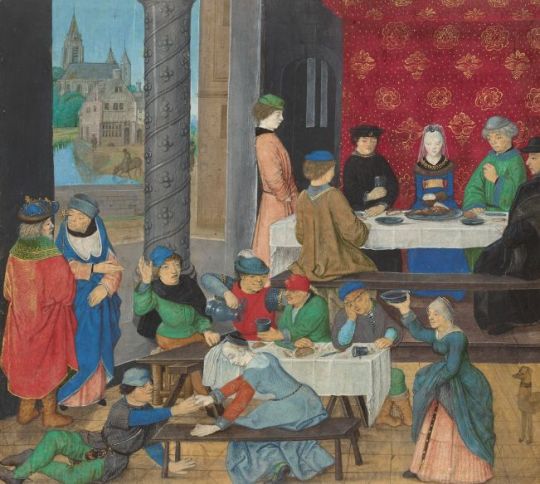
You know what? One week later and I am still fairly annoyed.
First of all: Yes, I am very much aware that technically one should not take MatPat too seriously and that for the most part if anything the “XY Theory” channels are just mild entertainment… But let’s face it: There are thousands of kids watching this, who are gonna take it seriously. And even a lot of adults, who do not know better.
So, as this is a topic near and dear to my heart and also a topic that the internet just throws around so much misinformation around on, let me talk a bit about Medieval Cuisine.
The Offense
Let me start with the thing that annoyed me so much, even though the issue is not so much about the issue at hand and more about the missing context in this one. Last week the @gametheoreoy sister channel Food Theory uploaded a video on Medieval Cuisine. While some of the information in there was good and included some important stuff that a lot of folks get wrong (like the fact that tomatoes, potatoes and maize were foods that came from the Americas and hence were not around in medieval Europe), the thing that annoyed me most about the video was… that MatPat and team absolutely ignored the fact that the place in question, medieval "Spain", was in that timeframe under under Black Muslim rule. In fact, there was technically no “Spain” at the time in question. Not as we imagine it today. Instead there was Al-Andalus (or Andalusia, how we know it today) and Leon-Castille. While the latter was Catholic, yes, the former was Muslim.
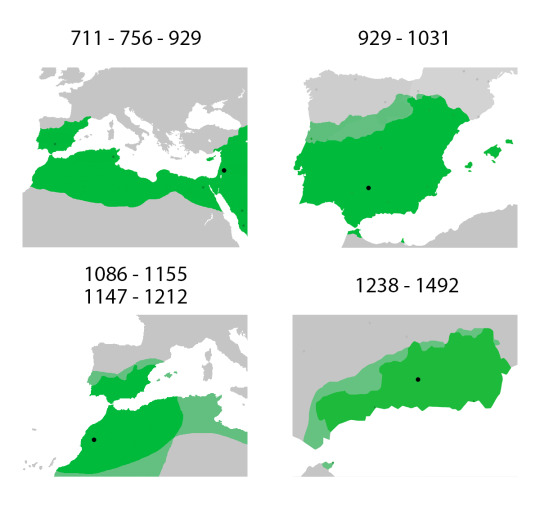
This really makes me angry, as it once again just plays into the misconception that medieval Europe was all white and Christian. Which it was not. For most of the medieval period, large chunks of the Iberian peninsula were under Muslim rule, which was also a reason that a lot of persecuted minorities – for example Jews, some Sinti and Romani people and also followers of Christian sects, that were not Catholic – fled there, as at that time Muslim rulers tended to not persecute those minorities, while the Catholic church did.
Now, it should be said that under Muslim rule, nobody who was not Muslim was forced to follow Muslim religious law, as not eating pork. But from what we know there was a lot less pork consumed on the Iberian peninsula at the time, than elsewhere in Europe. Instead, lamp, veal, dear and poultry were the more popular meats.
And I am sorry, MatPat, but talking about this part of Europe in the medieval times without speaking about Muslim rule is just a super bad look. Because it erases some important history.
While we are on it
But while we are on it, allow me to talk about Medieval cuisine, because bow, howdy, do people get this topic wrong.
For reference: No, I am no historian. But I am an autistic person, who spend a couple years hyperfixating on the history of food and henceforth getting annoyed with a lot of books, movies and the like, whenever they are depicting food in the medieval times.
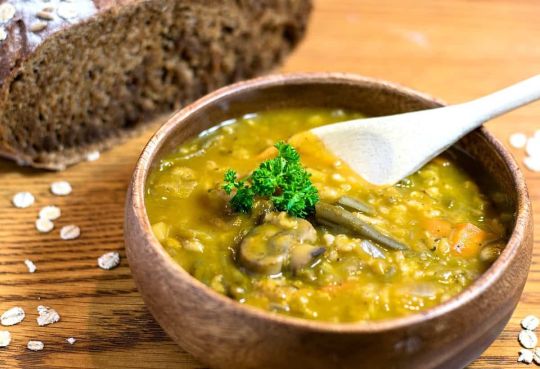
Some things that I have seen in those contexts are, obviously, the tomatoes, potatoes and maize. But especially potatoes. Oh, boy, howdy, do people love depicting medieval folks eating potatoes. Maybe not surprising, given that the potato is in fact a main stay in modern day European cuisine. Also, obviously, the potato has still the reputation of a pauper’s food, which then easily combines with the common misconception of “people in medieval times were very poor and ate very poorly”. But, again, the potato would not reach Europe until probably 1519, though it would still be a while until people figured out how to eat potatoes (given that the green parts of the plants are in fact poisonous). Same goes for tomatoes, all sorts of peppers and again maize (corn, for the Americans).
Meanwhile people would go up to me and tell me seriously that “people in the medieval times did not have noodles”, which is… ridiculous, given that noodles and all sorts of pasta were around in Europe since ancient times. Even the old Greeks and Romans ate noodles, just not in those many fancy forms we know today. For the most part in medieval times people ate some sort of ribbon noodle, something we might call ravioli today, just noodles cut into square and something that was called lasagna, though it did not resemble today’s lasagna much. But noodles there were.

Another food that people do not associate with the medieval times, even though it was very much around in Southern European places, was rice. Other than the Americas, people kinda always knew about Asia and were trading with them. Even in Roman times. Which lead to the Romans actually cultivating a strain of rice, that did well enough in Europe. Now, while rice was not a common food in medieval Europe, it was certainly around.
Probably the weirdest thing, someone claimed about medieval food, was, that there was no “stew” around in medieval times, because it was “too complicated for the people back then”. You know, stew, the food where you basically just put a lot of different stuff into one pot and cook it… “Too complicated”. Honestly, I do not know what to say about that. Stew was not only around, but also very common. Especially as a lot of people did not have actual kitchens and were instead cooking their food over their fireplace, that often enough would only allow for one pot.
The thing about meat
One thing that MatPat gets mostly right – though, again not for Al-Andalus/Spain, because things were different there – is the bit about meat in the middle ages, though while he says the right thing here, he kinda misses a bit of context.
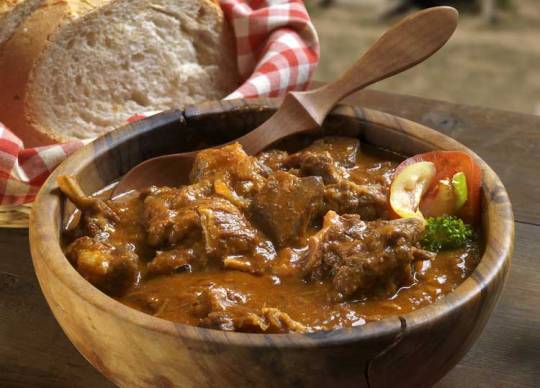
Meat was expensive in medieval times. Why? Because in a time before factory farming it was expensive to raise an animal. Some of you might’ve heard about “economy of scale”, which basically just says, that the more of a thing you produce, the cheaper it will become. And yes, this very much is true for factory farming. (Note: Factory farming is evil, simple as that. No living being should be treated the way, we treat those animals on factory farms.)
So, yes, without factory farms it was just more expensive to make the meat. Which was especially true for smaller animals like chicken. Especially as medieval chicken breeds were smaller than those chickens we see today.
Hence, for a lot of people, meat was just not a thing that they could eat more than once or twice a week. Or, more realistically, a lot of meat was eaten at once, when an animal was slaughtered, while only parts of the animal that could be conserved would then be served over a longer period of time.
It should also be noted that at least Christians tended to use all parts of the animal upon death, including blood and organs. (Muslims did not, as stuff like the blood is not halal.)

Now, one thing that should be noted, is, that most animals that were kept, were kept for multi purposes. Chicken lay eggs. Cows, sheep and goats give milk, with sheep obviously additionally providing wool, making them a very well-beloved animal in medieval times indeed. Horses you can ride. And yes, the pigs were useful, too, as they disposed of garbage, which was why in a lot of places you would just have pigs roaming the streets to take care of that.
Which brings me to the thing, a lot of folks do not want to hear, but… yeah, no, we have sources that tell us that medieval folks did at least also eat their dogs, when those were too old to help on the farm. We do not know how common this was, but we know that it happened. (Just as a note to the white folks getting all snooty about some Asian cultures eating dog meat.)
Of course, game was not kept but hunted. And yes, some people might go out to hunt when they were hungry for meat, but technically speaking it was illegal in many parts of Europe, based on the fact that game living in an area would belong to the nobility owning the land. Now, how those laws were enforced depended a lot on the area and how much game there was. But technically it was considered as such.
About vegetables
Having established that tomatoes, bell peppers, chilies and potatoes were not around in medieval times, this leaves the question: But what was around?
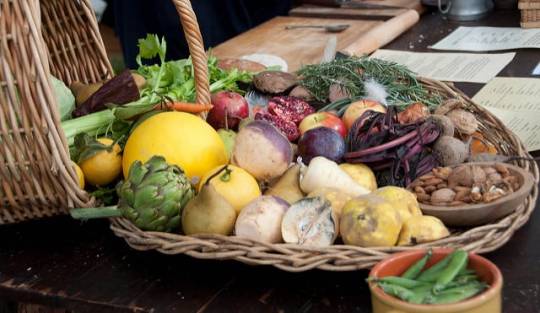
Well, two stable foods we still eat a lot today were definitely around: Carrots and peas. Especially peas were rather cheap and hence were eaten a lot. There was also at least one type of bean around in medieval Europe. Yes, only one. But horse beans were around in medieval Europe and were in fact eaten. Lentils were also quite popular.
Other than that, we also know of turnips, beets, cabbage, kohlrabi, onions and garlic being eaten. But that is not all, as there were several other types of vegetables, that are not around today that much, having been eaten. Especially a lot of root vegetables, like celeriac and parsnip for example.
But also fennel, that tends to be rather unpopular with modern people, was very much around and eaten.
One other vegetable that had some types around in Europe, was the pumpkin. Specifically, the gourd, that originated from Africa, but was cultivated in Europe rather early on.
Also there was a lot of salads and herbs, that also might be eaten as a form of salads.
But how do we know about medieval cuisine?
Another big thing that people tend to be kinda confused about, is, how we know what medieval people ate. Because, yes, at the time books were very expensive and a lot of folks could not read or write. While I will always harp on about the point that we greatly overestimate the number of completely illiterate folks in medieval times, as a lot of people were at least able to read a bit and write down the results of the harvest. But… written language was definitely not the main method of conserving information. Hence, there are only a handful of books around, that are primary texts and are collections of recipes. Most of them originate from noble or royal households, where the chefs would write down what the lord and lady of the house favored.
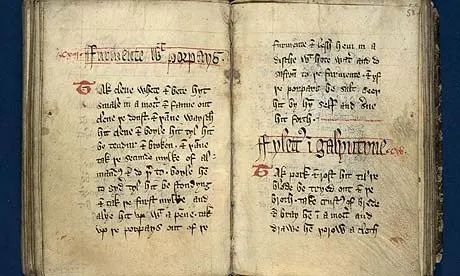
Other than that, we have a couple of letters, in which people shared their recipes.
But a lot of what we know “existed” is more from mentions within letters and diaries of “today I ate this and that” and historians then trying to figure out what that could have been, based around what we know about the foods that we know were available to the people. At times we also have findings of preserved foods. Now, of course those foods did not preserve for hundreds of years, but we can do chemical testing on what remained and hence figure out what originally had been preserved.
And of course there are pictures we have, that depict foods.
What we thankfully do have, is well documented harvests and things like ledgers from the likes of butchers and farmers based on the stuff they might have sold or given off as a form of taxes (which were often paid in goods, not coin). So, we know at least the raw materials and what might have been available.
And yes, there are also those kind of food that we know where around at ancient times and that are around in some form today. So, we can gather that they have been around the entire time. A good example for this are garlic bread and a version of pizza. We know that even in ancient times people baked bread with garlic butter and bread with vegetables, meat if available and cheese on them. It does not take a genius to figure out that bread with molten cheese on it, is pretty awesome.
Something I want to note as well is, that those recipe books we do have basically all originate from France, Germany and England, with two also originating in Italy. Medieval Europe was more than those four places. Which leads to my issue that a lot of folks tend to ignore that there were cultural differences and that, yes, we kinda are forced to rely on finds and maybe letters. (Believe me, as someone who writes about medieval Wallachia for my fics, it is a pain in the butt.)
But what did medieval people eat?
So, let me overgeneralize a bit. Because again, what you would eat in those times was dependent on where you were living and how wealthy you were. Richer people and nobility would eat meat a lot more often than less wealthy folks.

Generally poor folks would most of the time have some form of porridge for breakfast. That was: Oats cooked in water. If they could afford it, those might be cooked in milk. Maybe with honey. When it was the season, there might’ve been some fruits or nuts in there, too. But most of the times just oats in water. As oats were one of the cheapest forms of corn, they were good for that. Some people might use other corn like rye or barley softened in water as well.
If you could afford it, you might have head bread as well. For most folks it was a rye bread or rye sour dough, because rye was cheaper than wheat. This bread would not be eaten in slices, but rather eaten together with whatever was available. Maybe together with cheese. Maybe dunked in stew or soup. (Which, by the way, leads me to the fact that most taverns only served stew or soup with bread. Not “nice pork grilled over a fire” as we so often see it depicted in media.)
And yes, as a main warm meal there was stew and soup – vegetable soup for the most parts, because again: Meat was expensive. When there was meat in the soup, chances were, that It was all sorts of meats and in fact it was more likely that it would be hare or sheep, rather than pork or poultry. At times the same stew would be eaten for more than a week, with just new stuff being added, whenever it was half-empty, so you might actually get a mix of meats in there. (This was, again, also quite common in taverns, where people might just bring some stuff they had lying around and add it to the so called “everything stew”.) While it might sound disgusting to us today, it actually allowed for pretty deep flavor profiles.

Again, poor folks would often not have a dedicated kitchen or stove and rather would prepare their food over the fire place that was also used to heat the house. Which would lead to a lot of “one pot meals” as we would call it these days. And if there was meat, it often would be prepared as a larger chunk, instead of small cuts being prepared in a pan.
Of course, those were things that rich people could afford more easily. Though this did not necessarily mean nobility, but also folks like tradesmen and the likes. Who not only might have a dedicated kitchen, but also some maid to cook for them.
And there was of course the thing about spices: Medieval cuisine for the most part did not use spices, but only herbs. Because spices mostly originated in North Africa and South Asia and hence had to be traded over long distances. This would make them rather expensive, so many folks were not able to afford them. (Again: the entire colonialism affair started, because everyone wanted spices, while the Ottoman Empire controlled the spice trade.) This does, however, not mean that spice heavy recipes were unknown to medieval folks. They were expensive, yes, but we have both archeological and written evidence from meals, we would today call “curry” being prepared both in England and France.
Milk, no matter what animal it came from, would often be turned into some form of cheese, because most animals would only give milk, when it was season for their young. So, making the milk into cheese was a good way of making the milk last for longer. And yes, lots of folks knew how to make cheese. So, cheese was something that was often enough served to the side. Though dairy as well was not as common as it is today.
Wheat, again, was expensive. So, bread and other food based around wheat was more expensive than rye. Often wheat would only be enjoyed by rich folks and men of the cloth (meaning church folks). And only very rich people could afford white flour based food, while everyone else was eating food based around whole grain flour.
And yes, for the observant ones it should be obvious: Poor folks were eating a lot more healthy, than rich people were. Which led to interesting stuff like the fact that poor people often did not suffer from dental problems, even though dental hygiene was not yet a thing. Simply because they were eating better and less sweet.
Oh, and also: Most people would in fact drink alcoholic beverages (though with a lot less alcohol content than what we know today) instead of just pure water. Why? Well, because chances were, it made you less sick. And yes, also it tasted a lot better than stale water you got from a well. For most folks that was beer or ale, for richer folks wine or at least thinned wine. Except, again, in areas where there was a Muslim majority, because those obviously would not drink alcohol, so there would often be fewer breweries.
Medieval people did not eat badly
Now, let me make one thing clear, because it is a thing I tend to get annoyed by a lot: No, medieval people did not eat badly. Which was the other thing that annoyed me about MatPat’s video, given that the title card was “Medieval Food SUCKS!”, which… no, it doesn’t. It didn’t. It was different, from what we eat today, yes, but it was not bad food.
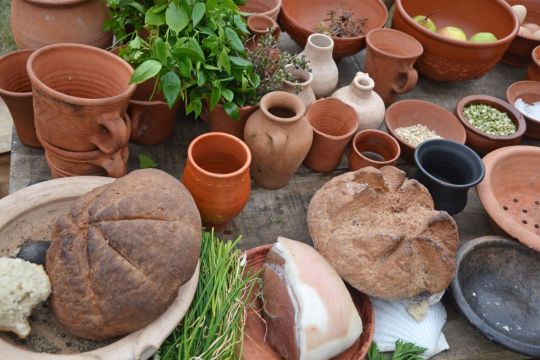
See, it is something that a lot of modern first world folks (especially white folks) are just too picky eaters and with that also kinda wasteful. We will only eat certain bits of dead animals, will not eat a lot of dead animals that are gonna die either way (heck, we have laws against eating certain animals, that are not based in any other reason but people’s emotional attachment to those animals), will not eat many vegetables that would be easier to grow and so on.
And sure, the fact that there was so little spice in medieval food, that makes it kinda… meh. But herbs can be used for those purposes, too. And yes, they can make things rather tasty indeed.
And yeah, I kinda bemoan the way we consume food today. Part of it has a lot to do with capitalism, of course. With the fact that we just do not have the time and means to grow our own food and the fact that of course, that to keep food prices low (which is necessary) but also keep the profits high, food production is plagued by all sorts of inhumanities. Be it slave labor, violence again humans (just look into the history of Chiquita or Dole) and of course the inhumane ways we keep animals.
A lot of folks do not even know how to prepare their own food properly. And do not know where it comes from. And as someone who identifies with the solarpunk culture, I just wish we could change away from that.
So, yeah, Let me just say: The MatPat video was just not that good and ignored an important part of history. Also, a lot of media depicts medieval food culture wrong, leading people to have all sorts of misconceptions about it.

Currently I am writing a fanfic about medieval cooking based around the Castlevania fandom. You can find it on Ao3! Though, yeah, the characters here are rich enough to eat spices.
And if you liked this little rant essay, maybe consider leaving me a little something on Ko-Fi!
#History#medieval cooking#medieval food#food theory#historical cooking#medieval europe#learning#education#middle ages#spain did not exist in the middle ages#white washed#white washed history#long reads#rant post#food history
115 notes
·
View notes
Text

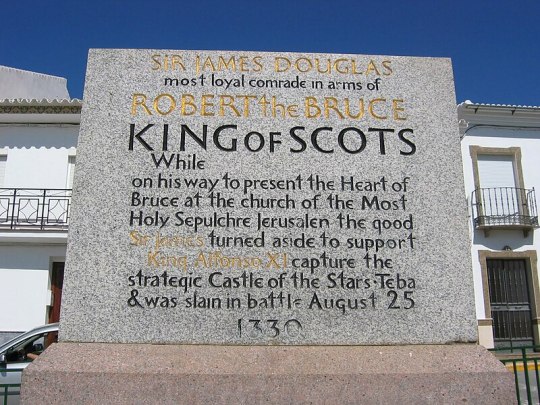
It was every medieval Knight's ambition to go on a Crusade, they saw it as a sense of duty. Robert the Bruce was no different, nor his faithful friend James Douglas, Lord of Douglas. The Bruce had been excommunicated barring him from taking the "pilgrimage" Sir James and he were rather busy as well, there was the matter of a war with England.
The English called Sir James "The Black Douglas" , the man was so frightening a wee verse has survived through the centuries that mothers used to whisper to their children when trying to get them to sleep.
Hush Ye, Hush Ye
Do not fret you,
The Black Douglas,
Will not get you.
The Douglas must have hated the English with a passion, his father Sir William Douglas, known as "le Hardi" or "the bold" had been one of the few nobles who openly supported Sir William Wallace, he died a prisoner of Longshanks in The Tower of London around 1298, the young James had been sent to France for safety during the early years of the Wars of Independence, and was educated in Paris, it was where he met William Lamberton, Bishop of St. Andrews, who took him as a squire. He returned to Scotland with Lamberton. His lands had been seized and awarded to Robert Clifford. Lamberton presented him at the occupying English court to petition for the return of his land shortly after the capture of Stirling Castle in 1304, but when Edward I of England heard whose son he was he grew angry and Douglas was forced to depart.
James seems to have went about his business after this not causing any problems of note until The Bruce took up arms against the English in 1306, it is clear that he had been starting to feel somewhat disgruntled about his lack of inheritance and, after Bruce’s return from exile a year later, the nineteen-year old joined the Scottish camp. Not long afterward, on Palm Sunday, he launched a swift and brutal attack on his castle of Douglas (held at this point by Lord Clifford) reportedly seizing the castle while the defenders were at church and shutting the garrison up in the cellar to burn to death. After Bruce’s victory at Loudon later that year, despite Douglas momentarily getting cold feet and attempting peace negotiations, he became active in the region that his descendants would draw their main strength from- the Borders.
And so it was that he fought with Bruce right through the campaign to free Scotland from Edwards tyranny.
Fast forward to 1330 and it is said Sir James was called to the bedside of King Robert as he lay dying he asked his loyal friend to remove his heart after death, place it in a casket, and take them on a pilgrimage to the Holy Land and bury his heart in the Holy Sepulchre at Jerusalem.
Sir James took Bruce’s heart, embalmed it then put it in a casket which he wore round his neck, and set off on the crusade to the Holy Land with a party of 25, made up of knights and noblemen, among them Sir William de Keith of Galston, Sir Robert Logan of Restalrig and his brother Sir John, Sir William de St Clair and his brother John de St Clair of Rosslyn ,Sir Alan Cathcart and Sir Symon Loccard of Lee.
Having been granted a promise of safe conduct from Edward III of England, the party sailed from North Berwick and made for Luys in Flanders in the spring of 1330 remaining there for 12 days and attracting more followers from all over Europe.
Their intention was to then sail to Cape Finnestere in the North West of Spain to visit Santiago de Campostella which had been ordained as a holy town by Pope Alexander lll following the discovery of the remains of the Apostle James.
A pilgrimage to Santiago captured the imagination of Christian Europe on an unprecedented scale as it was the 3rd holiest site in Christendom and at the height of its popularity in the 11th and 12th century attracted over half a million pilgrims each year.
However, before they could set off for Santiago word reached them that the King of Castile and Leon, Alphonso Xl , in his efforts to drive the Moors out of Granada had laid siege to the Castillo de las Estrellas(Castle of the Stars)at Teba which was occupied by the Saracen Army of Mohammed lV,Sultan of Granada.
Douglas sent word that they were prepared to join forces with Alphonso and sailed immediately to help, making landfall at Seville and marching the short distance to Teba.
Alphonso having heard tales of Douglas’s bravery and leadership skills gave him the right flank of the Castilian Army.
On the morning of the August 25th the Saracen army had assembled below the Castillo de las Estrellas under the command of Osmyn.
The Castilian trumpets sounded and Douglas, thinking it was a general advance, led his troops forward.
The Scottish contingent charged the Saracens and, although not fully supported by the rest of the army, managed to hold them, finally the Moors, unable to withstand the furious onslaught,fled.
Douglas, as was his custom, followed them until finding himself deserted, turned his horse with the intention of joining the main body.
Just then he observed Sir William St Clair surrounded by a body of Moors who had suddenly rallied. With the few knights who attended him Douglas turned hastily to attempt a rescue.
He soon found himself surrounded and, making one last charge shouting the words “A Bruce A Bruce”, took the casket containing the heart from around his neck and hurled into the enemies’ path shouting “Now go in front, as you desired and Ill follow you or die”.
Douglas and a party of his followers were all slain but they had diverted enough of the enemy forces away from the main thrust to enable the Castilian army to overrun the remainder and capture the Castle.
It has been speculated that the Moors lack of knowledge of European heraldry had a part to play in the death of Douglas.
Noblemen on both sides were valued as hostages, but because Douglas did not display the red cross on his tabard that distinguished English knights, but instead had the 3 stars of the Douglas family on his harness and shield, the Moors did not recognize his status or they would probably have spared his life.
Douglas’s body was recovered from the battlefield along with the casket, his bones, the flesh boiled off them, were taken back to Scotland by Sir William Keith of Galston in Ayrshire (who had missed the battle because of a broken arm), and deposited at St Bride's Church. The Heart of The Bruce was given to Regent Moray, who interred it under the high altar of Melrose Abbey.
The pics are one of Strathleven Artizans dressed as Sir James and the Memorial to Douglas at Teba.
40 notes
·
View notes
Text
So here’s the thing. I’m really troubled by the way local authorities and the media are warning folks beforehand about the level of brutality in the video that’ll be released tonight of the murder of Tyre Nichols. Part of me tries to explain it as “forewarned is forearmed” and as an attempt to proactively guard against the possible violence during the protests that are sure to follow. But another part of me looks deeper than that.
If you’re told over and over that you’ll be shown something that’s extremely violent and disturbing, human beings will tend to imagine the very worst thing that comes to mind. They will create images in their heads of what their own individual nightmare scenario looks like. And those images will continue to play in their heads in preparation. Because we all know that it’s usually the anticipation of something bad happening that frightens us most, not the actual event. This is the premise that most, if not all, horror movies are based on. Get the audience hyped up, build the tension and anxiety so that when the thing you’re dreading actually appears before you, there is a moment afterward when you can exhale and think to yourself, “Okay, that wasn’t as bad as I thought it would be. It was horrific, but I made it through.”
But we should NEVER, NEVER witness the killing of a human being by the same people who are supposed to be protecting us from senseless violence, and come out the other side of it thinking that way. It should never be commonplace or in any way considered to just be a part of our social fabric. We should NEVER become inured to such brutality.
I, for one, will not be watching the video. I have no desire to witness a young man being beaten to death. I made the mistake of watching the Facebook Live video of the murder of Philado Castile in 2016 and swore that I’d never do it again. I don’t need to watch video to know what they did to Tyre Nichols, to George Floyd, to Tamir Rice, to Sandra Bland, to countless and sometimes nameless others, and what they continue to do to primarily black and brown bodies in this country every single day. I don’t need to see it to know this country and many of its citizens are fundamentally broken.
Stand up, stand strong. Demand change. Maybe this time we’ll get it.
#tyre nichols#black lives matter#the fact that the cops that killed him are also black and were arrested within days#instead of weeks or months later#didn't escape me and is a whole 'nother discussion#we're so fucked
95 notes
·
View notes
Note
Soooo I heard that you wanted someone to request some smut? Well I'm here... I am requesting most graciously and politely... Regarding that green armored god of the Dune Sea. Just a small Thot of the reader seeing that Boba is having a rough day, and decides to put on a little dance and... Entertain him.
Do with this what you will, please feel free to make as smutty as you wish 😏😉
DEEP DICKIN’ UNDER THE CUT.

Boba Fett isn’t entirely sure how he managed to ensnare and then keep you - you’re a young, sturdy thing with big dark eyes, firm skin, and a voluptuous figure. You don’t seem attracted to power, specifically, but it’s clear you appreciate your life at the palace. You tend not to lounge - you’re kinetic without being too busy. You’re always doing something productive with your time, either around the palace or in town. Boba often wonders if you worry about “earning your keep” like Krrsantan or The Mods, and he reminds himself as he sits through the particulars of a dispute between two of his vassals that he should reassure you more often. After all, you handle many of the social obligations on his behalf with grace and diplomacy, allowing him to spend more of his time problem solving and less of it politicking. He has no great love for either, but he’s saddled with the lesser of the two evils because he has you.
It was a challenging day. Mok Shaiz may have been a scheming, treacherous leach of a mayor, but he’d been right about one thing: running a crime family is more complicated than bounty hunting. Boba Fett is glad to be done with the lonely life of a contract hunter (and sometimes killer) but that made the responsibilities of Daimyo no less burdensome. He’s grateful to be finished for the evening - conflicts resolved, streets relatively free of the most vicious criminal elements, house in order.
He’s looking forward to a quiet evening, perhaps a soak in a steam bath as the twin suns set. Perhaps he can tempt you to join him, he thinks, imagining how you’d feel wet and slick with perfumed castile soap, his hands gliding over your soft body. Your fleshiness, the give of your supple body against his hands, is the perfect complement to his own hardness.
Boba Fett is pleasantly surprised to find you already in the chambers you share wearing far less than he remembered you leaving the palace in this morning. An ensemble of gauzy black fabric and delicate gold chains. He takes a seat on a lounge chair near the window that overlooks the Dune Sea and the setting twin suns, turning the chair to face you. He pats one of this thick thighs with one hand and beckons you with the other.
“Come here to me, little one.”
You oblige, ever obedient to your Daimyo, but instead of sitting gently down on his thigh you straddle his waist and press your breasts into his broad chest. His armor is cool through the fabric and the gold chains make a soft clink against the beskar. He squeezes your meaty hips and plump butt, then stops to consider before removing each glove by biting the tip of the ring finger and continued squeezing and kneading with even more enthusiasm. You rest your hands on his shoulders and place your lips at the juncture of his neck and jaw. You were meant to entertain him this evening, but he can see now that he’s distracted you. It’s just as well - he’s never been able to resist you but perhaps tonight he can teach you what it means to be properly appreciated by a Daimyo. He frees your breasts and rocks you back in his lap so that he can take each of your nipples in his mouth. You gasp first at the feeling of your nipple being gently tugged between his teeth, then at the cool feeling of the evening air against your wet breast as he moves to the next nipple. His large hands brace you by your ribcage and the squeeze makes you feel momentarily corseted.
Boba Fett is a patient but not infinitely patient man, and he can only play with you for so long before the need to sink himself inside you overtakes him. Standing, and lifting you with him, he nearly throws you down onto the bed. He disrobes hastily, his armor clinking loudly on the cool stone floor. He pulls you to the edge of the bed by your ankles and runs his hands up your legs to hook his fingers around the sides of your panties. He slips them off of you and then leans down to kiss the insides of your thighs.
“Tell me what you want, mesh’la.”
You reach out for him and he settles with his hips between your legs and his hands once again on your ribcage. You run your hands up and down his biceps, feeling the power in his muscular arms.
“I want you inside me, Daimyo.”
He reaches down between the two of you and coats his fingers in your wetness, using it to lubricate his throbbing erection. You grip his forearms as the head of him nudges into you. He bends down to push a few strands of hair out of your face and kiss your forehead.
“Easy, little one. Relax and breathe.”
Allowing him to fill you is always a slow process. Boba Fett knows from experience that he is above average in both length and girth and that care must be taken with lovers. He forgot himself once and left you sore and injured - the sight of you wincing the next day remains a powerful regret, and since then he’s taken deliberate care at the start of your intimate encounters. There will be time enough for the kind of powerful, snapping thrusts you both enjoy so thoroughly. For the moment, he wants to watch your relax underneath him.
He listens to the sound of your breathing and feels for the settling in your body. He holds your jaw in one hand and kneads one of your breasts with the other. He moves slowly at first, building to deep, deliberate thrusts that make a wet noise between your bodies. Your moans are soft, his are throaty and growling. He pins your wrists above your head with one hand and fists your hair.
“Mesh’la, I’ve wanted this all day.”
He moves his free hand down to your hip and braces at the juncture of your thigh. The pace and intensity of his thrusts increases and you feel your self contracting around him.
“Come for me, little one.”
He kisses you and you cry into his mouth. The feeling of you milking his cock is enough to undo him and he grunts as he fills you. He nuzzles you and kisses the side of your face and your temple as you wrap your arms around his neck. He softens inside you but doesn’t pull out. Boba Fett doesn’t want to lose this incredible feeling of closeness with you. You smile sleepily.
“Daimyo, can we take a bath?”
He chuckles warmly.
“Of course, little one.”
…
@daimyosprincess
@dukeoftheblackstar
@acatalystrising
@ladytano420
@baufraus
#boba fett x reader#boba fett thots#the book of boba fett#daddy daimyo#boba fett imagine#boba fett can get it#boba fett#boba fett smut
41 notes
·
View notes
Note
What if Anne Boleyn had lived to see Mary come to the throne? Do you see Mary doing everything she can to get rid of her? Would Anne suffer from the same fate as Thomas Cramner?
Mm, that's a popular AU to be sure, but I think the political realities would have been rather more complex in such a counterfactual.
First, I'd have to ask the circumstances of them both surviving and Mary coming to the throne-- has Henry had his marriage with Anne annulled, with her being exiled from court? Or has Anne been Queen throughout the remainder of his reign? Has she had a son? Has there been any alteration or reversal to the Act of Succession (1534)? Has there been any alteration or reversal to the Act that declared Anne regent for her children, should Henry die? Have all her child/ren died, or has Elizabeth merely been married abroad (ie, is she currently living at the French court, wed to whichever prince or duke)? Does Mary have a husband, and if so, who is he, and what wealth and power and claims (to the English throne, or others, or merely title) does he have?
Assuming the second, and assuming Mary, as a sole femme, has a successful coup regardless (so, perhaps Anne attempts to assume regency with Elizabeth but is overthrown), again, the political realities are going to be complex. Edward VI's death happening in such secrecy and him altering the succession to make Jane Grey his heir without the approval of Parliament were circumstances that were to her advantage; all bolstered the rhetoric and justification of her coup, accession, and reign (based on the Act of Succession of 1543, even though she reversed her illegitimacy therein). The Marian myth was that John Dudley, out of pure ambition and greed, usurped the royal prerogative (of both HVIII and Edward VI) and forged an altered succession to place his daughter-in-law on the throne (and, as you mentioned, Cranmer as well).
So, in these altered circumstances, Mary's task would be near impossible. How could her propagandists argue that Anne had done the same, when all she had done was adhere to Acts of Parliament which were very well-known by the people? What would the justification be for her arrest in this scenario, much less execution? Historically, after his arrest, Mary petitioned the Pope at the time to have Cranmer excommunicated (likely, she didn't want to have any parallels with her father drawn in the case of the execution of Bishop/Cardinal Fisher) before his execution. In this, she succeeded, and being thus excommunicated, Cranmer was no longer Archbishop of Canterbury upon his day of execution. I would imagine that she would attempt the same in this counterfactual with AB and Cranmer both, and whether she was successful in securing their excommunications might then inform her actions.
Edit: Tbh, what I conceptualize for this scenario would be more like a succession/civil war for the throne with two female claimants (so, Mary and Elizabeth/Anne’s regency), similar in nature to that of Princess Juana vs Princess Isabella in the 1470s (it would be … very difficult for Mary to argue Elizabeth wasn’t Henry’s child had these Acts of Parliament remained and Anne herself remained Queen, though, as Isabella did for Juana re: Henry IV of Castile, since she didn’t really manage to do that even in the aftermath of Anne’s adultery accusations, and she certainly tried) and I think it’d be a toss-up as to who would emerge the victor.
Reason being, as I was just reminded of answering another ask, Anne was the greatest landowner among all the Tudor consorts. Mary I was also a great landowner by the time Edward VI died, because the council was at pains to ‘buy her goodwill’… this backfired, though, because it strengthened her base of power (Jeri L. McIntosh has done some fantastic work in this subject, btw), and played a huge part in why her coup succeeded. Simply put, landowning was power, was wealth. That’s probably what it would come down to, had she been granted as many lands during the beginning of the regency council for Elizabeth or whatever son AB might have had.
Another thing that would tip the scales would be if Mary received foreign aid via Imperial forces, but given Charles V never supplied any in 1553…
And again, excommunication, although Elizabeth or whatever son probably wasn’t going to be excommunicated as a minor (just like Edward VI wasn’t), maybe Anne might have been? This could also be a factor in whether or not Mary received foreign aid from any Catholic powers. Although, yk, HVIII and Elizabeth I both were excommunicated and yet they were never ousted from their thrones.
Anyway! Something to think about . Thanks for the intriguing question ☺️
#purplefictionlover#and of course; the advice of her councilors....#philip ii didn't want elizabeth to be executed; altho if she were already married i don't know what his feelings about the whole thing woul#be (assuming he's become king consort in this AU as well)#i don't know what he would have felt or thought about AB in this scenario altho certainly he does not seem to have#done anything for cranmer.
8 notes
·
View notes
Text
Terrible Fic Ideas #17: GOT, but make it Rhaenys
After reading a couple very interesting points about feminism and the patriarchy in House of the Dragon, I got angry - angry in the same way I get when I think about Rhaella and Elia's position as victims in the narrative. Then, when I cooled down, I got a plot bunny:
What if Rhaenys, not Aegon, got the Young Griff narrative in ASOIAF? Or: what if Rhaenys survived the Sack of King's Landing?
Just imagine it:
Jaime kills Aerys just like in canon, but unlike in canon, the shock doesn't set in quite so quickly - or maybe just another form of it does, as instead of staying with the king he killed he rushes to find the king's heir, Prince Aegon. He is the only Kingsguard in King's Landing, after all, and Aegon is the new king.
He finds Aegon dead and Elia three-quarters of the way to dying. He kills Gregor Clegane and Amory Lorch, saves Rhaenys, and on her dying mother's wish flees with her to Essos.
Jaime raises Rhaenys like a younger sister, filling much the same role of Jon Connington in the books. The difference is that, while it could be argued that Rhaenys is the rightful queen, Jaime has enough on his plate just keeping them both alive. He raises a girl, not a monarch - which is probably for the best anyway.
Key to this fic is: Rhaenys is just a girl. She's not a skilled warrior, though Jaime teaches her enough of knives to defend herself if necessary. She's not a super spy or spymaster, having somehow inherited the Stark bluntness without any blood relation. She's not a femme fatale, though she could be considered pretty enough when she grows out of her lanky androgynous childhood phase. All she is is a smart, stubborn girl who grows into a thoughtful, determined woman.
The rest of canon continues as before, minus Young and Old Griff. Robert becomes king, is cuckolded by his wife, dies; Ned is executed; Jon Snow is sent to the wall; &c. Very little of this matters at first to Jaime or Rhaenys. They're just trying to survive.
But then it does start mattering. Rhaenys might not be rightful queen of the Seven Kingdoms per the Targaryen's agnatic-cognatic succession laws (brothers before daughters) - that would be Viserys. But under normal Westerosi (sons before daughters) and Dornish (eldest child first) succession, she is. Once Viserys dies, Rhaenys claim is absolute. If anyone believes she is who she says she is.
But it only starts mattering after Viserys dies.
More specifically, it only starts mattering after Daenerys decides to imprison her dragons in the Great Pyramid of Meereen. Drogon escapes his brothers' fate - and manages to find Rhaenys in the wilds of Essos. Rhaenys chooses to rename him Balerion and becomes his new dragon rider.
Drogon/Balerion is taken as a sign. Maybe not divine providence, but as proof Rhaenys might be able to pull off reconquering a continent like she's starting to consider. And so... they do.
More specifically, they follow somewhat Daenerys' arc in the final seasons of GoT, hiring the Golden Company and taking over Dragonstone while Stannis is away.
And when newly crowned King Jon Snow comes to parlay? Well, Rhaenys is practical. She's a queen who needs military support to gain her crown, he's a king that needs dragons to save Westeros. They join their crowns like Ferdinand and Isabella did Aragon and Castile. Which is to say, they enter into a dynastic marriage, which offers them both legitimacy, military and economic support for both sides, and the potential for desperately needed heirs. It's definitely not love at first sight, but love grows.
Then they go off and fight the white walkers, because ice zombies bringing the apocalypse is an easy lie to disprove, so why lie about it? The exact details of how don't matter - maybe it goes exactly as in the show, maybe it's quick and easy with a dragon and a queen who was raised by a man who was very clear about her father and grandfather's failings and therefore very little of the Targaryen sense of boundless superiority.
The North secure, they turn their attention to the rest of the Seven Kingdoms. It goes better than expected, with the caveat that the southern nobles demand Jon and Rhaenys be crowned monarchs of the Seven Kingdoms together, as even a bastard is better than a woman in many of their eyes. But as Rhaenys is already handling most the day to day running of both their kingdoms while Jon deals with the military, it's one they have no problem agreeing to.
Throughout all of this, no one has any ideas Jon is the son of Prince Rhaegar and Lyanna Stark, least of all Jon.
It comes out one day - perhaps when Jon and Rhaenys have a purple-eyed child despite taking after their Northern and Dornish heritage respectively; perhaps Bran says something - and they have to contend with the fact that the spouse they've come to care for is actually their half-sibling, but it changes little. Rhaenys rules, Jon is just there to lead the armies and keep the southern lords happy.
Throughout all of this, Daenerys is scheming in the background to get her throne back, assuming Rhaenys is a pretender, but her invasion attempt goes rather sideways when Rhaegal abandons her for Jon during the first battle. Unfortunately, not even the lure of other Targaryens can overcome Daenerys' desire to be queen at this point, and so she's eventually repulsed back to the Essos. She remains a thorn in Rhaenys' side for the the rest of her life, but when Daenerys dies without heirs, Viserion rejoins his brothers at Dragonstone.
Bonuses include: 1) The Dornish throwing their support in with Rhaenys, but Oberyn having difficulty with her ability to forgive feuds he's been nursing for years - she loves Jaime despite his inability to save her mother or brother and is willing to marry a Northerner despite Lyanna shaming her mother; 2) Rhaenys smashing the patriarchy, not by acting as a man, but by just being a competent ruler; and 3) Jon being utterly content to be a house husband after the fighting ends, serving more as the Red Keep's master-at-arms than co-ruler of the Seven Kingdoms.
And that's all I have. It may not be particularly coherent, as it was written over the course of a hectic week, but as always feel free to adopt. Just link back.
Other Jon Snow Headcanons: Aegon the Unyielding | Aemon the Adventurous | Lady Arryn | Lady Baratheon | Lady Lannister | Lady Stark | Prince Consort | Prince of Summerhall | Queen Mother
More Terrible Fic Ideas
#game of thrones#a song of ice and fire#got#asoiaf#plot bunny#fic ideas#rhaenys daughter of elia#jon snow#jon snow is a targaryen#Jon x rhaenys
60 notes
·
View notes
Note
This is probably a huge question but do we know much about the six wives and their relationships to their mothers?
you would be much better off asking the coa/ab/kp blogs this about their fave wives, because i don’t know every woman in depth! we naturally don’t have an equal level of source about these relationships for all women, and as it is a relationship between women the scholarship also often underserves us!
catherine of aragon and isabel seem to have been close, but of course i doubt catherine had the opportunity nor inclination to insult or diminish her connection with her mother, considering isabel of castile’s importance. tremlett describes isabel as a surprisingly “affectionate and attentive mother”, citing a source where “the queen held up her youngest daughter” to watch a bullfight with her. catherine’s predicament following arthur’s death leads me to assume isabel must have felt some genuine concern for her daughter, as she attempted to push for catherine to return home or marry henry, and financially maintained the spanish ladies in her daughter’s household iirc.
i believe anne boleyn and her mother, elizabeth howard, were genuinely close. elizabeth played the functional role as mother (acting as chaperone for anne and henry, for example) — but it seems like they had an affectionate relationship. in letters, anne described her affectionately: “next to my own mother, no woman alive I love better”, and when anne boleyn was in the tower, she had an outburst that “oh my mother, thou wilt die with sorrow”.
we know next to nothing about jane’s relationship with her mother, margery, unfortunately!
anne of cleves seems to have been close with her mother, maria! according to darsie: “from henry viii’s ambassadors it is known that maria of jülich-berg shared a close relationship with anna”. anne continued to write to her mother once in england, and reportedly maria was thrilled to hear from her, described as “she showed great joy” upon receiving anne’s letter.
katherine howard’s mother, jocasta, died when she was very young, so they were not able to have a relationship. i suppose you could argue that the dowager duchess, agnes, functionally filled that role, but i do not think there’s evidence that she served that role on an emotional capacity, nor that either felt that intimately close to the other. in any case, katherine left us no evidence of her feelings regarding her parents.
i haven’t focused much on maud, katherine parr’s mother, so i don’t know much about their relationship. she worked hard for her daughter’s prospects, but i don’t know much about their personal relationship. i can’t imagine she was around much in katherine’s early years, considering her court career, but i must confess i haven’t looked too deeply into it so i genuinely don’t know!
#anne boleyn#katherine howard#jane seymour#catherine of aragon#katherine parr#anne of cleves#📝#elizabeth howard#jocasta culpeper#maud green#margery wentworth#isabela of castile#maria of julich-berg
5 notes
·
View notes